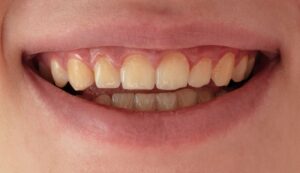
If your eyes are red, itchy, or watery, you might think it’s pink eye. But sometimes, other eye problems look very similar to pink eye and can be misdiagnosed. Knowing the differences is important because these conditions need different treatments and sometimes urgent care.
Here, we’ll explain the most common eye issues that are often mistaken for pink eye, how you can spot the difference, and what to do if you’re not sure.
What Is Pink Eye (Conjunctivitis)?
First, a quick reminder: pink eye is inflammation of the conjunctiva, the clear membrane covering your eye and eyelids. It causes redness, irritation, and discharge. It’s usually caused by viruses, bacteria, or allergies.
However, several other eye problems can cause red eyes and similar symptoms, and that’s where confusion happens.
what Is Commonly Mistaken As Pink Eye
1. Allergic Conjunctivitis
- Why it’s confused with pink eye: Causes redness, itching, and watery eyes very similar to viral or bacterial pink eye.
- Key difference: Allergic conjunctivitis usually affects both eyes, comes with sneezing or a runny nose, and often happens seasonally or around allergens like pollen or pet dander.
2. Dry Eye Syndrome
- Why it’s confused: Dry eyes become red and irritated, often with a gritty, burning sensation.
- Key difference: Unlike pink eye, dry eye doesn’t usually cause discharge or crusting and tends to be worse in dry or windy conditions.
3. Iritis (Anterior Uveitis)
- Why it’s confused: Causes eye redness and pain, plus sensitivity to light.
- Key difference: Iritis often affects only one eye and causes deep eye pain, blurry vision, and sometimes headaches. It needs urgent medical care.
4. Keratitis (Corneal Infection)
- Why it’s confused: Red eyes, pain, tearing, and sensitivity to light look like pink eye symptoms.
- Key difference: Keratitis often causes severe eye pain and blurry or hazy vision. It requires immediate treatment to prevent damage.
5. Stye (Hordeolum)
- Why it’s confused: A painful red bump on the eyelid can cause localized redness and swelling.
- Key difference: A stye looks like a pimple on your eyelid and usually doesn’t cause eye discharge or affect vision.
Blepharitis (Eyelid Inflammation)
- Why it’s confused: Causes redness, itching, and crusting on the eyelashes, similar to pink eye discharge.
- Key difference: Blepharitis mainly affects the eyelid edges and causes flaking skin rather than widespread eye redness.
Pink Eye Symptoms
- Redness in one or both eyes
- Itchy or irritated eyes
- Watery eyes or excessive tearing
- Gritty or sandy feeling in the eye
- Sensitivity to light (photophobia)
- Blurred vision in some cases
- Discharge from the eye:
- Clear and watery (common in viral/allergic conjunctivitis)
- Thick, yellow or green (common in bacterial conjunctivitis)
- Eyelids sticking together, especially after waking up
- Swelling of the eyelids (common in kids)
Pink Eye Causes
- Viral infections: The most common cause, often linked to cold or respiratory viruses like adenovirus.
- Bacterial infections: Caused by bacteria such as Staphylococcus or Streptococcus, leading to thicker eye discharge.
- Allergies: Reaction to pollen, dust, pet dander, or other allergens causing itchy, watery eyes.
- Irritants: Exposure to smoke, chlorine in pools, or chemical fumes can irritate the eyes and cause redness.
- Contact lens use: Poor hygiene or overuse can lead to eye irritation and infection.
- Foreign objects: Dirt, sand, or other particles getting into the eye can cause redness and inflammation.
What Is Commonly Misdiagnosed as Pink Eye
Why Misdiagnosis Matters
Treating the wrong condition can make symptoms worse or delay healing. For example:
- Using antibiotics for viral conjunctivitis won’t help.
- Ignoring iritis or keratitis can lead to worse conditions.
- Allergies need allergy meds, not antibiotics.
That’s why a professional eye exam is important if your symptoms don’t improve or get worse.
When to See an Eye Doctor
Visit your eye doctor if you experience:
- Severe eye pain or headache
- Blurred or worsening vision
- Sensitivity to light that affects daily activities
- Eye redness lasting longer than a week
- Thick discharge or crusting that doesn’t clear up
- Symptoms in only one eye with intense discomfort
How You Can Protect Your Eyes
- Wash hands regularly
- Avoid touching your eyes
- Remove contact lenses until symptoms clear
- Use allergy medications if you have seasonal allergies
- Protect eyes from wind, dust, and smoke
what is commonly misdiagnosed as pink eye in kids
Sometimes, what looks like pink eye in kids isn’t actually pink eye at all. Things like allergies, a mild stye, or even a little irritation from dust or wind can cause redness and watery eyes that seem similar. Babies often have blocked tear ducts that can cause a bit of discharge, which might be mistaken for an infection. The good news is, most of these conditions are mild and easy to treat. If your child’s eyes are red or irritated, it’s a good idea to check in with a doctor just to be sure.
what does pink eye look like in a child
Pink eye in a child usually looks like redness in the white part of the eye, along with watery or sticky discharge. Their eye might seem teary or look like it has a light pink or red tint, especially around the inner corners. Sometimes the eyelids may be puffy, and the lashes can stick together after sleep because of crusty discharge. Your child might also rub their eyes more than usual or say their eyes feel itchy or “scratchy.” While it can look concerning, pink eye is often mild and treatable.
Can Pink Eye Be Misdiagnosed
Yes, pink eye (conjunctivitis) can sometimes be misdiagnosed because its symptoms like redness, tearing, itchiness, and discharge are similar to other eye conditions. For example, allergies, dry eye syndrome, a stye, blepharitis, or even more serious conditions like iritis or keratitis can look a lot like pink eye. In kids especially, it can be hard to tell just from symptoms alone. That’s why it’s always a good idea to check with a healthcare provider if the symptoms don’t improve or if you’re unsure.
Can a Child Have Pink Eye Without Discharge?
Yes, a child can have pink eye even if there’s no noticeable discharge. This is especially true in cases of viral or allergic conjunctivitis. Unlike bacterial pink eye, which often comes with yellow or green discharge that can make the eyelids stick together, viral and allergic types may cause only redness, itching, and watery eyes. So, if your child’s eyes are red and irritated but not producing any thick discharge, it could still be pink eye. It’s a good idea to have a doctor take a look to confirm the cause and recommend the right treatment.


